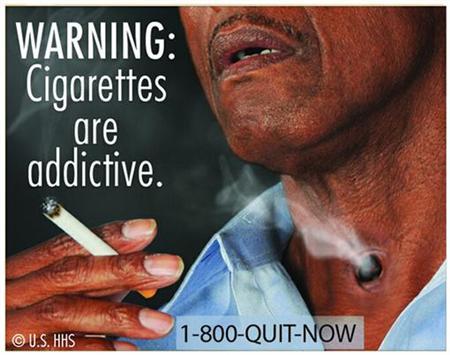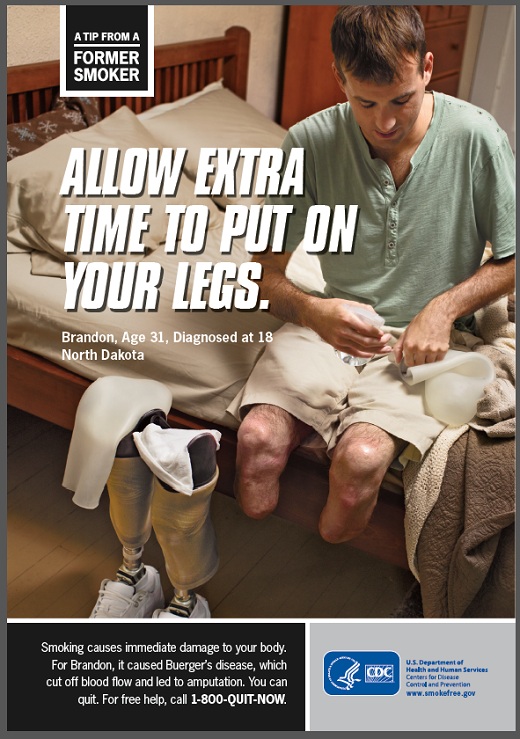Graphic Anti-Smoking Ads Work – Increase Attempts to Quit
Posted on
Even with the controversy and court actions, this is good news – for every person who tries to quit = the better.
Graphic and/or emotional television anti-smoking ads get more smokers to try to quit than less intense ads, according to a new study in the American Journal of Preventive Medicine.
“Harder hitting ads worked equally well, regardless of how much you wanted to quit, how much your income is and your level of education,” said Matthew C. Farrelly, Ph.D., chief scientist at RTI International in Research Triangle Park, N.C., and lead author on the study.
The study evaluated the impact of anti-smoking ads run by the New York Tobacco Control Program from 2003 to 2011. Smokers were surveyed about their smoking habits, their recall of anti-smoking ads, their desire to quit and demographic information, such as income level and race. Researchers looked at media market data and determined that the survey participants were exposed to an average of three emotional or graphic anti-smoking commercials and three comparison ads per month during that period. Comparison ads advocated or encouraged quitting but without strong emotional content.
The survey found that current smokers who recalled seeing at least one emotional or graphic ad were 29 percent more likely to have tried to quit in the prior year. Exposure to comparison ads did not increase quit attempts. If the goal is to get smokers to try to quit, ads need to evoke a strongly negative reaction to smoking, the authors concluded.
Here is a video that has played on California television. It is shocking, but if it can prevent one more case of smoking induced cancer….
[youtube]http://www.youtube.com/watch?v=RfhaGvQZb00&feature=share&list=PLC41FF76D6DD72070[/youtube]




